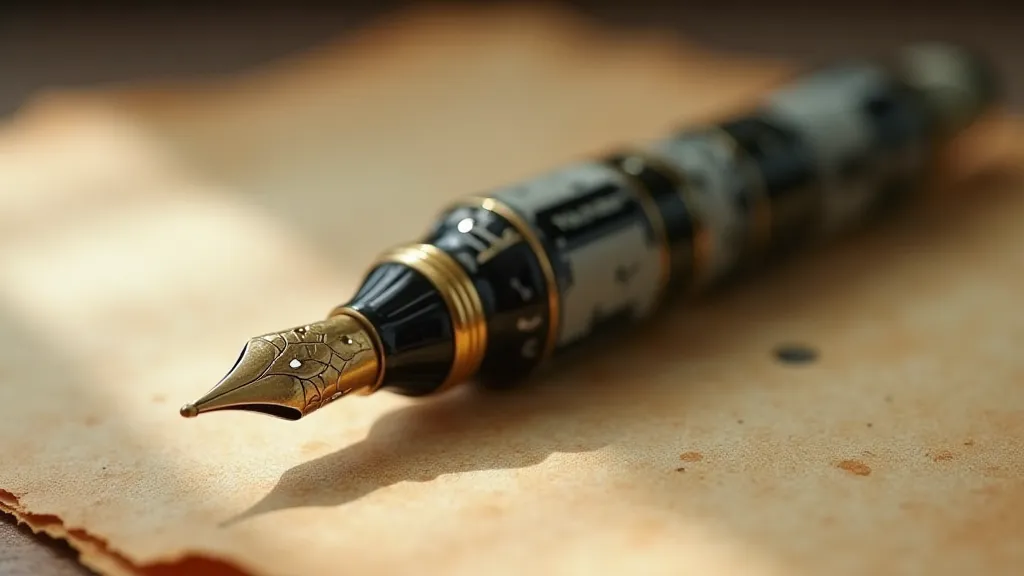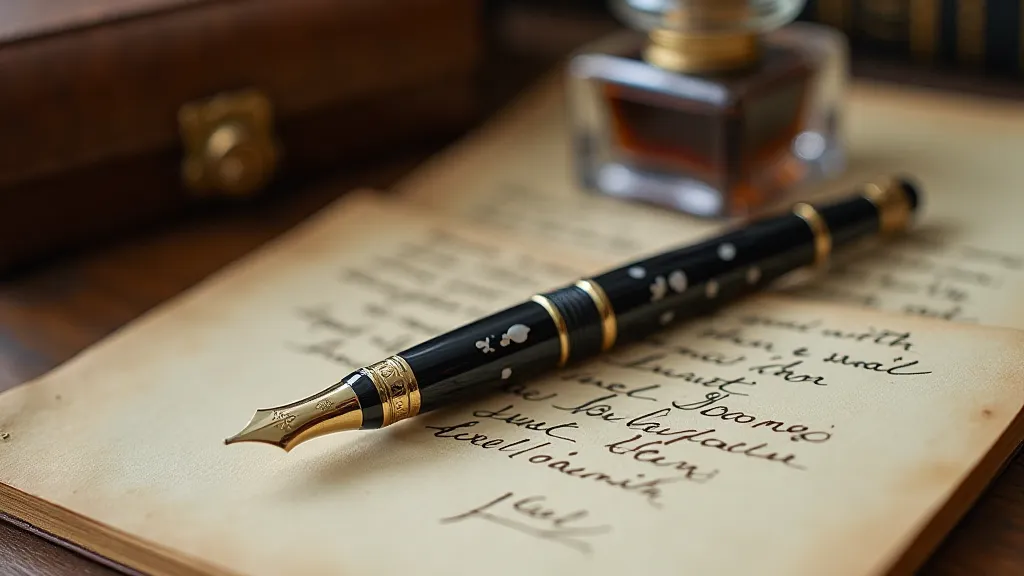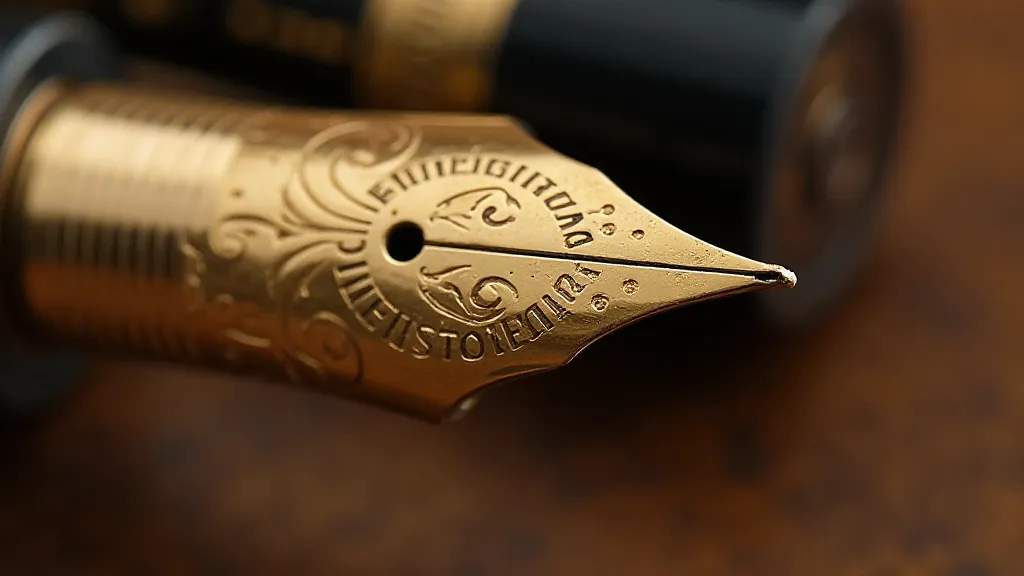The Gilded Cage: Exploring the Materiality of Status in Vintage Pen Design
There’s a quiet intimacy in holding an antique pen. It’s not just about the potential to produce elegant script; it’s about connecting with a tangible piece of history, a conduit to a time when craftsmanship was paramount and personal stationery was a carefully curated expression of social standing. These weren't mere writing tools; they were statements, reflections of wealth, ambition, and aspiration, encased in precious metals and adorned with intricate details. The story these pens tell isn't just about ink and paper; it's about the gilded cages of status and the artistry that built them.
My own fascination began with a simple gift – a Parker Duofold, circa 1920s. It wasn's a particularly rare example, but the weight of it in my hand, the swirl of the black and pearl celluloid, the perfectly balanced heft…it felt different. It whispered of a different era, an era of correspondence, of carefully considered prose, and of demonstrating one’s position through refined possessions. It sparked a desire to understand not just *how* these pens were made, but *why*.
The Language of Materials
In the late 19th and early 20th centuries, conspicuous consumption wasn’t a modern phenomenon; it was a deeply ingrained social practice. The materials used to construct a pen were the first and most immediate signal of its owner's place within the societal hierarchy. Gold was, of course, the king. Solid gold pens, often elaborate with filigree and engraving, were the domain of the wealthiest industrialists, politicians, and aristocracy. The sheer expense communicated a level of affluence that words could not convey.
But it wasn’t just about precious metals. The rise of celluloid in the late 1800s offered new possibilities. While less expensive than gold, celluloid allowed for a range of colors and patterns – swirls, stripes, and mottled effects – that could be just as evocative of status. High-grade celluloid, carefully formulated and precisely colored, became a mark of distinction in itself. Consider the early Waterman pens; their “pearl” and “onyx” finishes weren’t just aesthetic choices; they subtly implied a refined sensibility and a discerning taste.

Then there’s silver. While less ostentatious than gold, sterling silver pens were common amongst the professional class - lawyers, doctors, and successful merchants. Silver offered a balance between perceived value and accessibility, demonstrating success without tipping into blatant extravagance. Engravings, often featuring initials or family crests, further personalized the pen and solidified its owner’s identity.
The Art of Ornamentation
Beyond the core materials, the ornamentation of antique pens provides a fascinating glimpse into the decorative sensibilities of the era. The Art Nouveau and Art Deco movements, in particular, had a profound influence on pen design. Organic forms, flowing lines, and stylized floral motifs became common, transforming a functional object into a miniature work of art. Montblanc, for example, early on embraced the Art Deco aesthetic, creating pens with geometric patterns and stepped designs that reflected the modern spirit of the time.
Nib design, too, was integral to the pen's overall presentation. Simple, utilitarian nibs were perfectly acceptable for everyday writing, but the truly luxurious pens featured elaborate, hand-crafted nibs – often with ornate flourishes and custom engravings. The flexibility of a nib was also a status symbol; a flexible nib, requiring skill to master, demonstrated a level of refinement and experience. The finest examples were crafted from gold alloys, renowned for their responsiveness and smoothness. It's a detail that’s often overlooked by casual observers, but for the discerning collector, the nib is as crucial as the pen's barrel.
Consider the intricate filigree work found on some Sheaffer pens from the early 1900s. These delicate webs of gold or silver wire, painstakingly applied by skilled artisans, demonstrated a level of craftsmanship rarely seen today. The labor involved alone communicated a degree of luxury and exclusivity.
Brands as Symbols
Certain brands became intrinsically linked with status and prestige. Parker, Waterman, Montblanc, Sheaffer – these names represented more than just a manufacturer; they were emblems of refinement and sophistication. Owning a pen from one of these brands was a statement in itself, a declaration of belonging to a certain social circle.

The Parker Duofold, for instance, rapidly became synonymous with success and good taste. Its distinctive barrel shape and bold color combinations made it instantly recognizable, and its association with prominent figures of the era cemented its status as a desirable object. Similarly, Montblanc’s early pens, with their simple elegance and meticulous craftsmanship, became coveted symbols of European refinement.
Even lesser-known brands, often regional or specialized, contributed to this complex interplay of materials and status. These brands might use less expensive materials, but their branding and marketing often emphasized exclusivity and quality – appealing to a niche market eager to distinguish themselves.
The Echoes of a Lost Era
The social pressures that drove the creation of these exquisitely crafted pens have, thankfully, lessened in intensity. While luxury pens still exist, the overt display of wealth is less prevalent. Yet, the legacy of that era remains tangible in the objects themselves.
Holding a vintage pen is more than just appreciating its beauty; it’s understanding the social context that shaped its creation. It's recognizing the skill and artistry of the craftspeople who dedicated their lives to creating these miniature masterpieces. It's a reminder of a time when objects were made to last, not to be discarded, and when personal stationery was a carefully curated expression of one's place in the world.
Restoring or collecting these pens isn’s just about preserving objects; it's about safeguarding a piece of history. It’s a tangible connection to a time when the language of luxury was written in gold, celluloid, and exquisitely crafted nibs.






